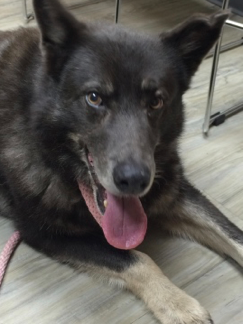 I would like to say something here for all my canine friends. Never, ever, ever, ever, allow your dog to be taken away by an ACO (animal control officer).
I would like to say something here for all my canine friends. Never, ever, ever, ever, allow your dog to be taken away by an ACO (animal control officer).
They do NOT have that power unless you give it to them.
Refuse to allow them to take your dog!!!
At that point (your refusal) they must get a COURT ORDER to seize your dog and you have an opportunity to get a lawyer and fight it. Once they HAVE your dog, it is very difficult to get your dog back. DO NOT EVER ALLOW ANYONE TO TAKE YOUR DOG FROM YOU. Very few people understand that an ACO or a police officer DO NOT HAVE THAT AUTHORITY without a court order.
They lead you to believe that they do and will even call the police to come and assist them if you refuse. Even the cops rarely know animal law. They will say they have to take your dog and they will tell you that you have to surrender him.
THEY CAN NOT TAKE YOUR DOG UNLESS YOU ALLOW IT.
Put your dog inside, away from view, refuse to surrender, and tell them to come back with a court order.
Once they have your dog – things get extremely difficult.
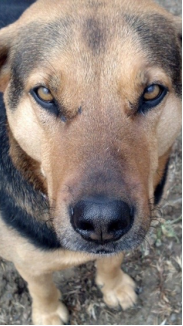 We had a case like this for someone years ago and we got some of the best animal lawyers involved (not my dog). Our local town police (this was in Goshen) and the local judges got a major education that day. Most of them do not know the law.
We had a case like this for someone years ago and we got some of the best animal lawyers involved (not my dog). Our local town police (this was in Goshen) and the local judges got a major education that day. Most of them do not know the law.
If it looks like you will lose your court hearing – one thing you can do is to immediately transfer your dog’s ownership BEFORE THE CASE IS DETERMINED BY A JUDGE, to someone in ANOTHER town or city or state. Of course I am not suggesting this. I merely mention it as something i have seen done, or know of that was done. Once the dog is transferred to another town jurisdiction though, then THAT town must then go through the same procedure and go to court to seize your dog. (At this time you must also move your dog outside your town limits). Most towns will then not pursue this, as the incident did not happen in their jurisdiction. (If you are going to do this, then you must do this before any legal decree comes down from a judge – if you do it after then you are in violation of the law and can be prosecuted and your dog can be seized from wherever it is.)
Please remember this. Below is some additional information for you and the statute that backs up what I am telling you above. Print out the Ag & Markets Law if you wish and highlight the pertinent parts. I have posted most of the important parts of that law below, and explained them. I know this will be a dry read for most people, but trust me that if your dog bites a person or another animal, you will be happy you know this.
I started peppering this blog with images of snarling dogs etc…but you know what? MOST dogs accused of “heinous crimes” are really NOT vicious and reacted as should probably be expected in many cases. Why do we expect so much more from dogs than we would from a human being? So instead I have filled this blog with pictures of my own wonderful dogs. May we never be in this situation, and may YOU never be either!
Definition of a Dangerous Dog (per Agriculture and Markets Law 121):
You can find the complete statute here: http://www.animallaw.info/statutes/stusnyagri_mkts_121.htm
“any dog which (i) without justification attacks a person, companion animal as defined in [section 350(5) ] of this chapter, farm animal as defined in [section 350(4) ] of this chapter or domestic animal as defined in subdivision seven of this section and causes physical injury or death, or (ii) behaves in a manner which a reasonable person would believe poses a serious and unjustified imminent threat of serious physical injury or death to one or more persons, companion animals, farm animals or domestic animals or (iii) without justification attacks a service dog, guide dog or hearing dog and causes physical injury or death” (§ 108[24] ).
Engaging in behavior that could be construed by the dog as physically threatening has been recognized as a mitigating factor when determining whether a dog (Town of Hempstead v. Lindsey, 2009 NY Slip Op 52420‐ NY Dist. Court, Nassau Cty). What does that mean? Well that means if someone is doing something to your dog, or acting in a way that your dog feels is threatening to him or you, his bite may be excused.
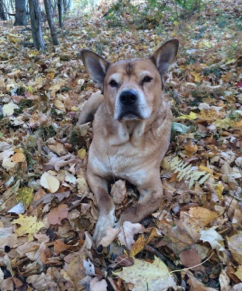 Also to declare a dog a “dangerous dog” the court must also prove that the attack posed a “serious injury or death”.
Also to declare a dog a “dangerous dog” the court must also prove that the attack posed a “serious injury or death”.
In People v. Jornov, 65 AD 3d 363, 881 NYS2d 776 (4th Dept 2009), the Court found that a victim who sustained a bite wound to his right leg did not suffer a serious physical injury within the meaning of the statute. The victim of that bite suffered a torn hamstring, was prescribed antibiotics and anti-inflammatory medication, and required to attend physical therapy for six to eight weeks. Ibid. The Court stated that there was no evidence that the victim sustained “protracted impairment of health’ as a result of the incident.
Until complaints are filed, no one can seize your dog, and even after a complaint is filed, a JUDGE must make that ruling and then order the ACO to seize the dog. This is NOT a decision an ACO or police office can make on their own.
Thereupon, the judge or justice shall immediately determine if there is probable cause to believe the dog is a dangerous dog and, if so, shall issue an order to any dog control officer, peace officer, acting pursuant to his special duties, or police officer directing such officer to immediately seize such dog and hold the same pending judicial determination as provided in this section.
Then there has to be a hearing within 5 days, and the “owner” needs to get 2 days notice. Burden of proof is on the person who makes the complaint to prove the dog is a dangerous dog. So they can NOT drag this on endlessly and keep your dog impounded!
Whether or not the judge or justice finds there is probable cause for suchseizure, he shall, within five days and upon written notice of not less than two days to the owner of the dog, hold a hearing on the complaint. The petitioner shall have the burden at such hearing to prove the dog is a “dangerous dog” by clear and convincing evidence.
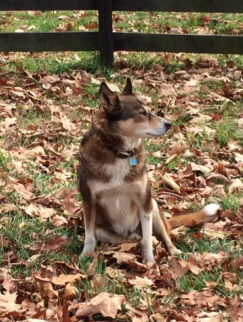 If satisfied that the dog is a dangerous dog, the judge or justice shall then order neutering or spaying of the dog, microchipping of the dog and one or more of the following as deemed appropriate under the circumstances and as deemed necessary for the protection of the public:
If satisfied that the dog is a dangerous dog, the judge or justice shall then order neutering or spaying of the dog, microchipping of the dog and one or more of the following as deemed appropriate under the circumstances and as deemed necessary for the protection of the public:
- Have the dog evaluated at the owner’s expense.
- Confine the dog.
- Restrain the dog in public
- Muzzle the dog in public
- Order that liability insurance be in force at all times.
Now here’s the most important part. In order to kill or permanently confine the dog, at least one of the following special circumstances has to be true:
a) the dog, without justification, attacked a person causing serious physical injury or death; [NYS Penal Law section 10.0 defines “Serious physical injury” as physical injury which creates a substantial risk of death, or which causes death or serious and protracted disfigurement, protracted impairment of health or protracted loss or impairment of the function of any bodily organ.] (b) the dog has a known vicious propensity as evidenced by a previous unjustified attack on a person, which caused serious physical injury or death; or (c) the dog, without justification, caused serious physical injury or death to a companion animal, farm animal or domestic animal,
If the dog is deemed “dangerous” the owner has 30 days to appeal in County Court. So if they sentence the dog to death they have to wait 30 days to kill the dog. The owner should appeal to county court in this case.
The owner of a dog found to be a “dangerous dog” pursuant to this section may appeal such determination, and/or the court’s order concerning disposition of the dog to the court having jurisdiction to hear civil appeals in the county where the “dangerous dog” finding was made. The owner shall commence such appeal by filing a notice of appeal with the appropriate court within thirty days of the final order pursuant to this section. Court rules governing civil appeals in the appropriate jurisdiction shall govern the appeal of a determination under this section.
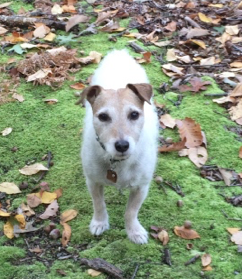 If the judge orders death there is an AUTOMATIC stay with the appeal. Anything else has to be motioned for:
If the judge orders death there is an AUTOMATIC stay with the appeal. Anything else has to be motioned for:
Upon filing a notice of appeal from an order of humane euthanasia pursuant to this section, such order shall be automatically stayed pending final determination of any appeal. In all other circumstances, the owner of the dog may make application to the court to issue a stay of disposition pending determination of the appeal.
Please also note this important paragraph in the law:
A dog shall not be declared dangerous if the court determines the conduct of the dog (a) was justified because the threat, injury or damage was sustained by a person who at the time was committing a crime or offense upon the owner or custodian of the dog or upon the property of the owner or custodian of the dog; (b) was justified because the injured, threatened or killed person was tormenting, abusing, assaulting or physically threatening the dog or its offspring, or has in the past tormented, abused, assaulted or physically threatened the dog or its offspring; (c) was justified because the dog was responding to pain or injury, or was protecting itself, its owner, custodian, or a member of its household, its kennels or its offspring; or was justified because the injured, threatened or killed companion animal, farm animal or domestic animal was attacking or threatening to attack the dog or its offspring. Testimony of a certified applied behaviorist, a board certified veterinary behaviorist, or another recognized expert shall be relevant to the court’s determination as to whether the dog’s behavior was justified pursuant to the provisions of this subdivision.
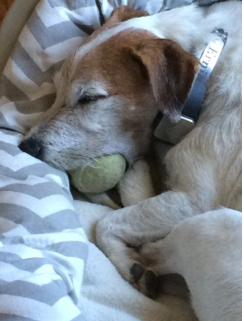 In many cases, you could probably easily argue that the dog THOUGHT s/he was protecting her or her family. The law carves out exemptions for dogs doing their duty.
In many cases, you could probably easily argue that the dog THOUGHT s/he was protecting her or her family. The law carves out exemptions for dogs doing their duty.
Town ACO’s and LEO’s ostensibly seize dogs pursuant to New York Agriculture and Markets Law Section 121. As an initial matter, subsection 2 of that statute requires that a finding of probable cause and an order be issued before the dogs can be seized. If an order was not issued by a judge, NO ONE CAN SEIZE YOUR DOG or order you to hand them over!
Section 121 subsection 2 goes on to require that a hearing be held to determine whether the dog is “dangerous” for purposes of the statute. The Town would bear the burden of proof at any such hearing. In that connection, the Town would be required to present proof from a certified animal behavior expert that has been qualified to testify as an expert in New York courts on matters of this sort. The Humane Society’s, Police Officers, Animal Control Officers or Shelter Workers, even regular obedience trainers are NOT considered certified animal behavior experts. Anyone else testifying in regards to the dogs behavior is inadmissible hearsay.
Section 121 subsection 3 only permits euthanasia of a dog after it has been determined to be “dangerous” at a hearing if certain aggravating circumstances are present. Such circumstances invariably require that the dog have engaged in an attack that caused “serious injury or death.”
Damages could be significant if a town euthanized a dog without meeting all the above requirements and it would expose the Town and its agents to significant liability.

Great advice.
Don’t forget that seizing a dog without a hearing is a violation of the US Constitution 4th Amendment Due Process clause, and the New York Constitution Article 1, Section 6, both of which are very serious.
Thank you, … in that, you may be the Greatest Dog Lover of all times !